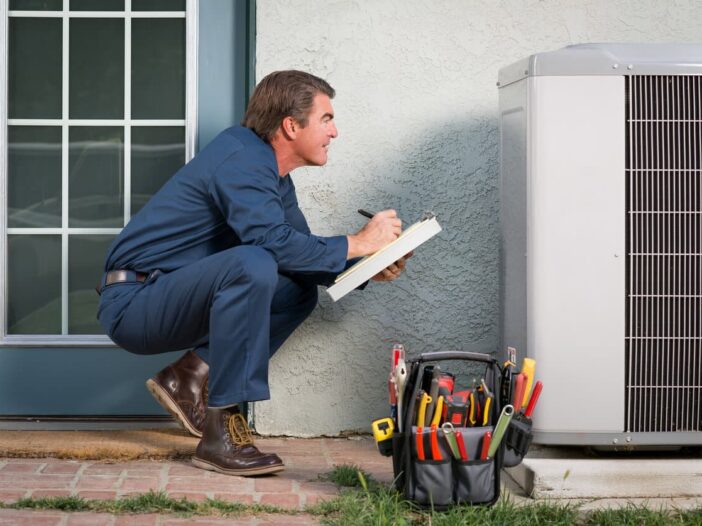
Noisy air conditioner? The best option, whether yours makes noise from the indoor component or the outdoor compressor, is to upgrade with a modern HVAC system that features noise abatement technology.
But if you’re not ready to go that far, there are some other things you can do for quieting A/C noises. The first step is to pinpoint the cause of the noise, which can derive from a whole range of issues.
Why Is My A/C So Loud?
Among the top reasons for a noisy A/C are these:
- Compressor
- Fan
- Vibrations
- Expanding ductwork
Now let’s take a look at how to lower the volume for each of these noise-generators.
Compressor: One way to inhibit the noise from the outdoor compressor is to build a wall around it, with plywood and acoustical, noise-absorbing panels. Give the unit a 3-foot clearance all the way around. Otherwise, talk to your A/C tech about any available insulation technology that might be added.
Fans: You have fans outdoors in the compressor and indoors in the air handling system. Noise from rattling fans may involve broken parts or unbalanced fan blades. If you’re comfortable entering the condenser/compressor component or the indoor unit, you can inspect the fan blades for dirt and clean them if need be, as dirt on blades can result in improper operation and noise. Otherwise, ask the HVAC tech to clean the blades during maintenance.
Vibrations: The mounts for the various components may not be tight, resulting in vibrations. Ask your HVAC tech about this when you schedule your annual preventative maintenance.
Ductwork: Lots of different noises can emanate from the ductwork for a variety of reasons, but one of the most common is a banging sound caused by the expansion and contraction of the duct walls. Acoustic liners installed to muffle duct noise may help, while bangs and booms near the trunk and plenum may be mitigated by installing an expansion collar in the duct joint.

